Across the continent, many elective medical clinics are reporting an unseasonal burst in new patient inquiries. In this short video we explore the factors driving the burst in demand and ask the question, could this be a bubble?
We examine what historic data can tell us about current trends, and discuss what to expect for in the coming months. Presented by Etna Interactive CEO, Ryan Miller, clinic leaders are challenged to explore three questions they must answer to guide their practice into the future.
Related Links:
- The Future of Elective Medical Marketing Online: 4 Ways to Future-Proof Your Practice
- Harvard Business Review: Roaring Out of Recession
Video Transcription:
Hey again, it’s great to be back with you, Ryan Miller here with Etna Interactive and we’re going to talk today about a phenomenon that many of you are experiencing which is a burst in patient demand. Now, earlier this week I was on a call with one of our clients, not an especially satisfactory call, because when I asked the surgeon why he thought there was this sudden increase, a spike in patient demand, he kind of shrugged, and said, “I guess it’s pent up demand.” That really didn’t feel right, or at least it didn’t feel like it was the full story, and because we have to make decisions based on understanding the demand in our practice today, and what we expect for the future, we wanted to look at the data we had available and see how that can help us understand what is really happening.
What I’m about to share with you is a look at the average number of cosmetic consultation inquiries sampled from across five large and mature clinics all over North America. Now, the reason why the mature part is important is because practices that are newer will often show kind of atypical demand curves as they’re going through the big growth cycles.
What we find across these clinics in a typical year, this is taken from 2019, is that the very beginning of the year, January, February, March, generally sees increased demand for consultations—there’s more inquiries coming in. That tends to drop and flatten out as we get into the spring and first of the summer, and then as soon as fall starts, and the kids are getting back to school, the holidays are upon us, we see those drop again a little bit more and often stay flat, and sometimes with peaks as we get into the end of the year, December timeframe.
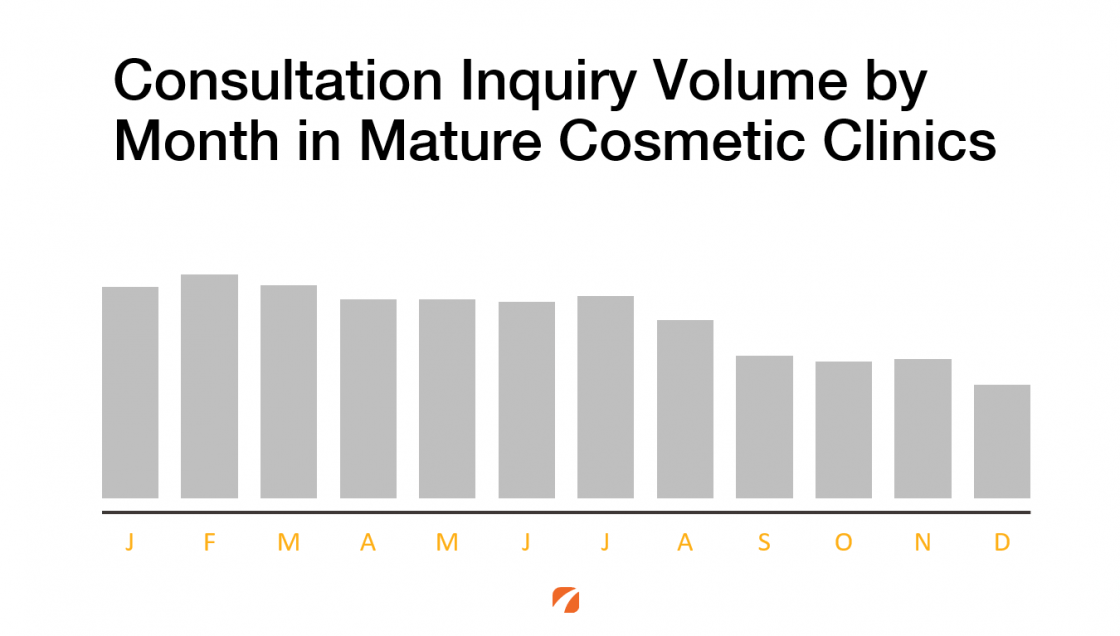
Now the curves vary a little bit in specialties like ophthalmology, but there are established curves that we can look at. What’s interesting though is when we overlay behaviors for this calendar year. When we put 2020 on top of it, January looked fairly similar, February was a little bit off, probably because we were getting early news about the outbreak and the pandemic, but as soon as we hit March and clinics begin to close, we see consultation requests drop. Now, granted they’re not going to zero, and you can see that on the screen. The 25-35% decline in the interest in services. I think at that point people weren’t sure how long this was going to last. As we get into April we see that in this cohort at least all of them had adopted virtual consultation programs and the number of consultation requests actually bumped back up when the offices were closed, surprising.
What’s more surprising though are the next three months. As we look at May, June, and July the amount of consultation requests not only jumps up, but it actually significantly exceeds 2019 peaks for the same period of time.
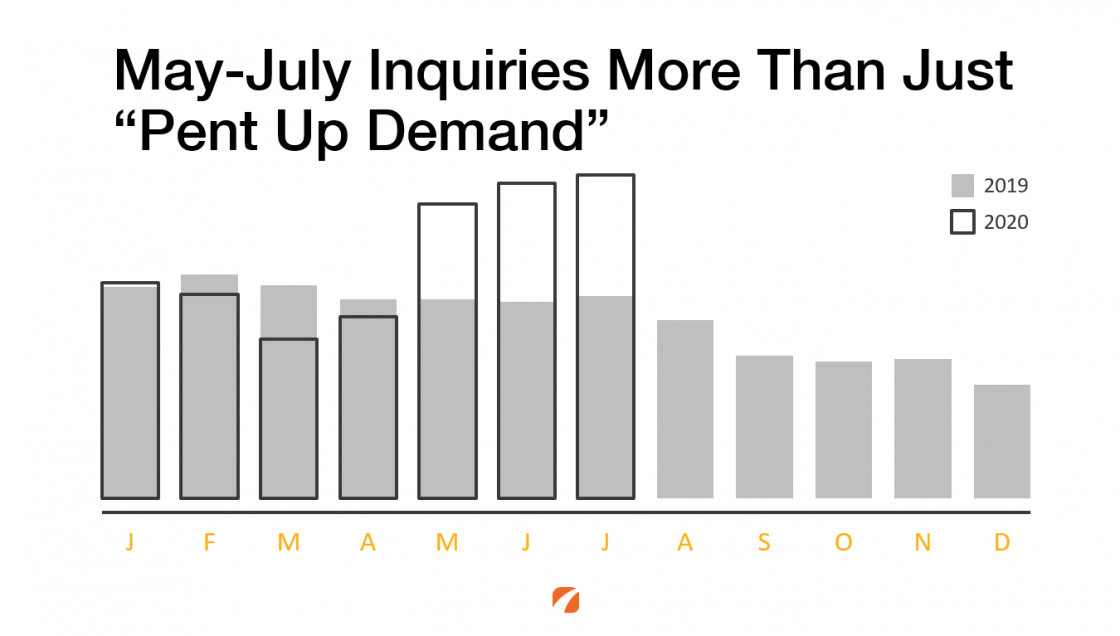
Now to help you understand the magnitude of difference here let me color in red for you on the screen the declines that we saw. It’s actually not very significant. But the growth that we’ve seen, the gains in excess of typical behaviors, this is the part that makes us shrug a little bit because certainly pent up demand explains part of it, we might argue that the red is the pent up demand—the amount of consultation requests we would have normally expected that got delayed and are coming in today. But the number of consultation requests actually far outstrips the amount of red you see on the screen. The green is clearly bigger.
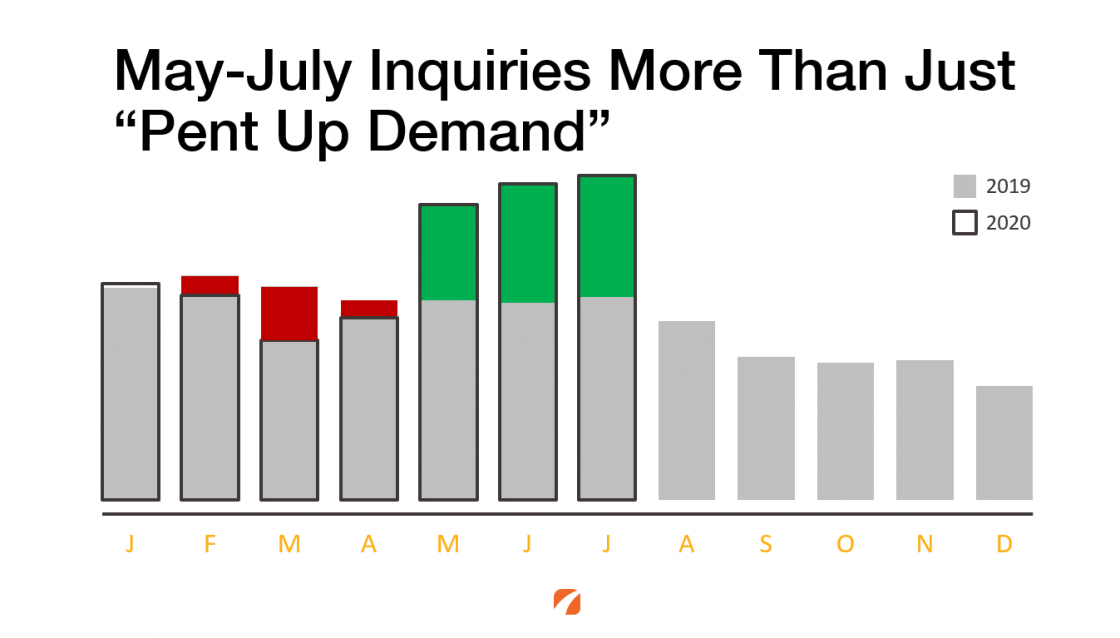
So what’s driving that? We might theorize, and I don’t know that any of us really know, that it’s the dropping of certain barriers, right, people have time off so it’s easier to plan surgeries where they can recover in the privacy of their home. People are staring at themselves in the camera all day long so they’re maybe feeling additional motivation to make enhancements, specifically in the cosmetic arena. We see people with extra money, even people who are working are getting stimulus checks or were in the beginning of the year and that may be lowering some of the financial barriers that people experience.
But we have to ask the question, “Is that really sustainable?” and in some ways that reminds me of the great toilet paper rush of the early 2020s. Right, there was an actual, practical reason why people needed to buy more toilet paper because they were using the bathroom at home more often instead of using toilet paper at work, so they did actually need a little bit more. But not as much as everybody was buying and it was that slightly irrational fear, or unnatural set of circumstances that was causing them to stockpile.
Now when we step back from that, in addition to the inquiries coming in, we also need to look at the surgeries that are actually on your schedule today, and question what’s making that up. Obviously right now, since many of you are back in somewhat of a new, normal way of operating, you are getting the typical inquiries that we might expect for the August, September time period. But what’s interesting to contemplate today, and the reason why so many of you are feeling so very busy is because in addition to that we have all of the cases that were on the books for that March, April time-frame that had to be pushed forward. So that’s going to make us feel a little saturated already.
Let’s add on top of that, for those of you that were performing virtual consultations while you were closed, let’s add on top of that those procedures that you were successfully booking because of your virtual consultations, and what we’re left with then is kind of irrational, or let’s use the word, atypical exuberance. That we have a lot of people right now, because of the circumstances, who are deciding now, rather than sometime in the future, is the right time for their consultation.
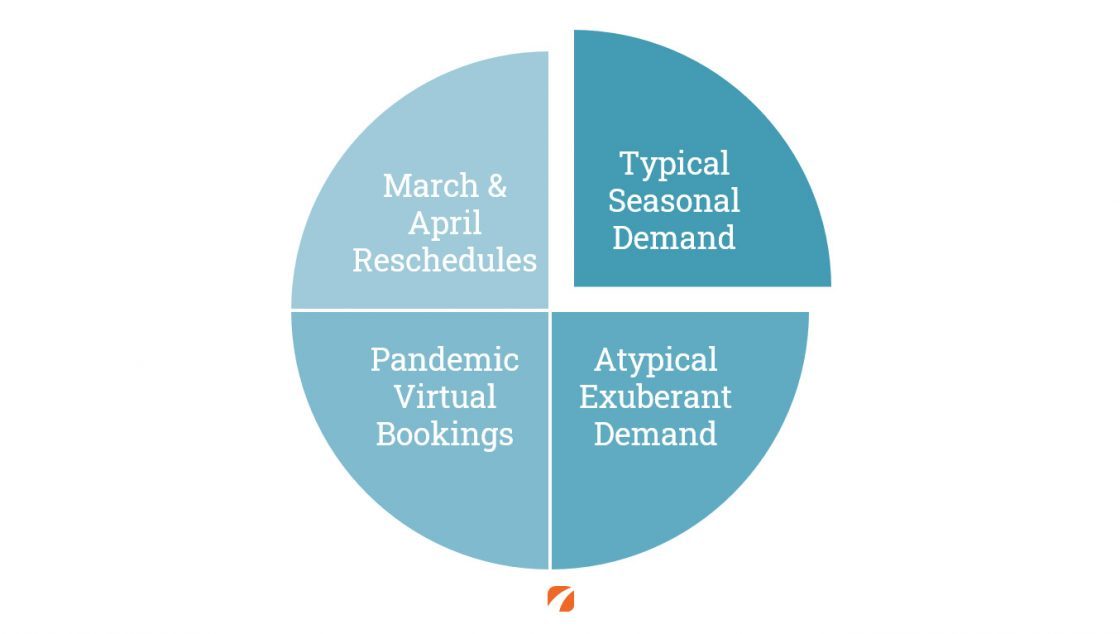
The challenge that I have in thinking about what’s on the schedule today, what’s driving increase in demand, is really understanding how much of that is going to be here in three months. Now I certainly am not going to be an alarmist and say it’s all going to go away immediately, but some of the things that I know that are on your schedule today, like those consultations or those procedures you were already scheduled to book in the earlier part of this year, the ones that you were able to accumulate during virtual consultation season in March and April, you’re going to work through those fairly quickly—I’ve got to ask the question: what are we really going to be left with?
Here’s my challenge for clinic leaders is to step back and really ask yourself, looking at your schedule today and the fact that you’re probably booked several weeks or months into the future, how much of that is going to clear away leaving a more typical type of operation going forward. In addition to that we want to think just a little bit about what it is that you believe is behind the burst of inquiries coming in right now, and how long do you believe that is going to last.
A little bit of a nagging question that I have in the back of my own head is how much are we robbing Peter to pay Paul, and I joked a little bit when I was talking earlier about the toilet paper, but I’ll be honest, I’m not going to need to buy toilet paper again probably until late 2021. I wonder with some of this really big upsurgence in the number of consultation requests that we’re seeing right now, how much are we actually stealing from the available market pool that might potentially result in a decline later on.
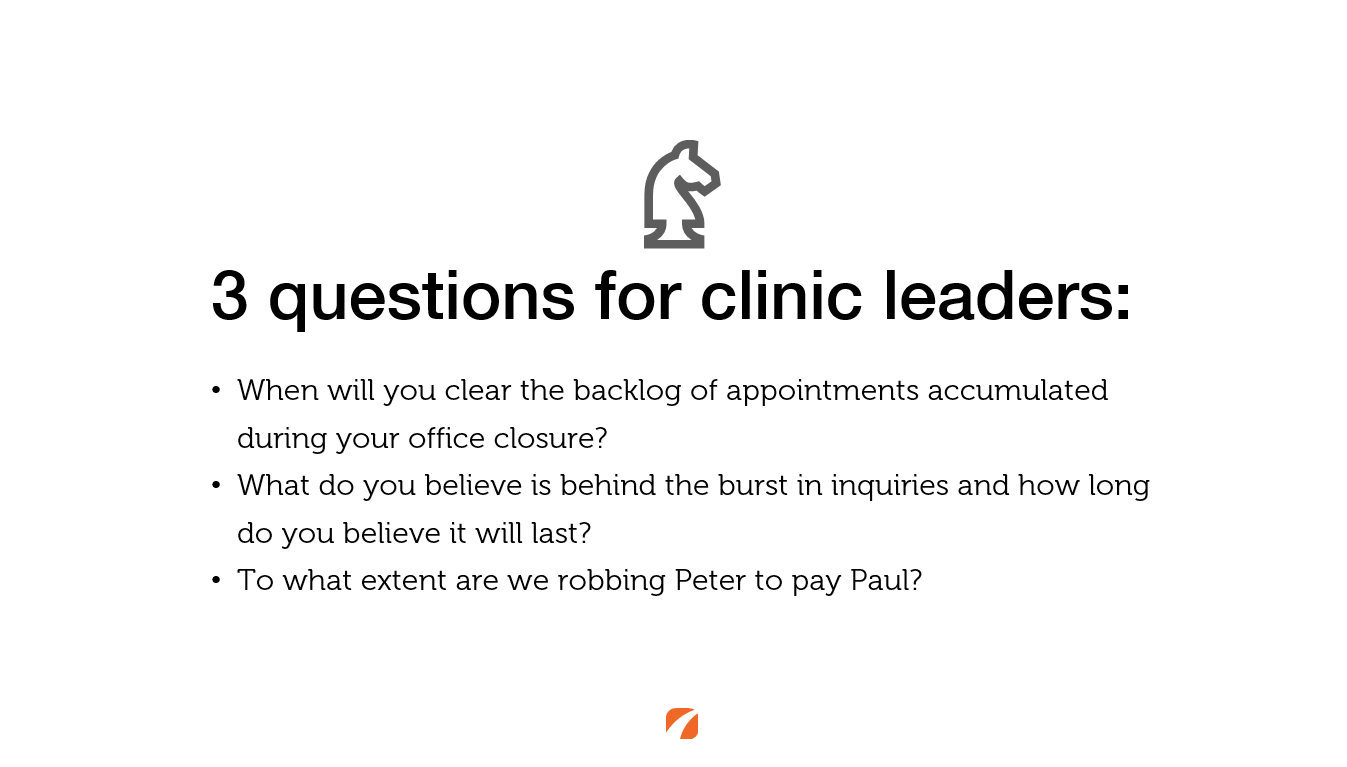
For those of you that are looking and saying I get it and I’m on board, I do think there’s the possibility that I need to be thinking about the long term—we’ve shared this article a couple of times, it was a fantastic study that was published in HBR looking specifically at the companies that most successfully have weathered historic recessions, and again and again, the advice is fairly straightforward. Cut costs where you can, continue to market, and invest in innovation and assets that make you more competitive.
It seems fairly straightforward, but for those of you that want to do something more explicit about ensuring that you have a stronger future, greater security, perhaps it’s ironic that in February before this all came down we recorded a short webinar that looked at four things that we felt practices could and should be doing to really engage in kind of a future-proof type of marketing.
Our recommendation here is even if you’re feeling that things are going great today, anticipate that there might be a time when things are a little slower in the future, and start looking now at how you can make smart investments in long-term marketing projects that are going to make you a stronger and more competitive clinic.
Thanks again for tuning in, if you have questions or comments leave them below in our blog, and we’ll look forward to hearing back from you about what you think is behind this big increase in demand from elective medical patients today.
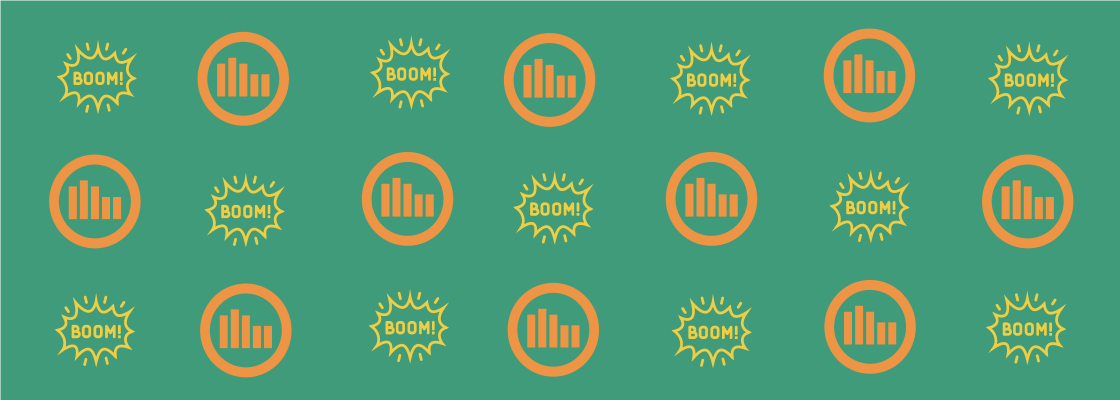

Leave a Comment